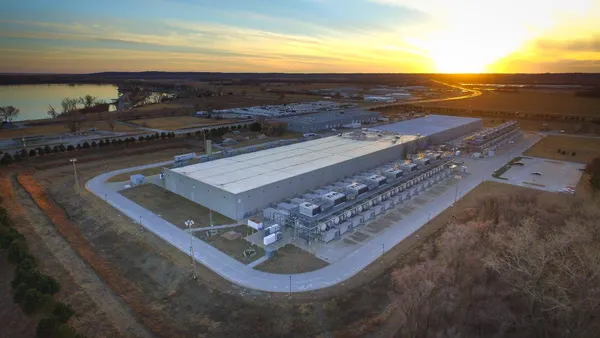Dive Brief:
- The Southwestern U.S. is facing "a significant and urgent need" for new resources due to growing loads and planned fossil fuel plant retirements, according to a new report jointly funded by Arizona Public Service Company, Public Service Company of New Mexico and other power providers.
- The region will need to see an unprecedented level of development in the coming years, with utilities quickly adding new resources to the grid to meet the increasing demand, in order to ensure grid reliability, the report, put together by Energy and Environmental Economics (E3) found.
- "In light of the increasing complexity and the increasing importance of reliability planning, we’re seeing many people ask questions as to whether the industry’s current approaches to planning for resource adequacy are well suited to the future challenges that we envision ourselves confronting," E3 partner Nick Schlag said during a webinar last week.
Dive Insight:
Rolling blackouts that occurred in California and Texas in recent years serve as a reminder of what can go wrong if utilities fail to plan appropriately for the reliability risks on their systems, but also exemplify how planning for reliability is becoming more complex, according to Schlag.
"There’s now a widespread understanding across the industry that our efforts to plan for reliability actually have to encompass vulnerabilities that exist at all times of [the] day and all times of [the] year, not only just during the peak periods," he added.
The report considered six trends that E3 expects to reshape resource adequacy dynamics in the region: load growth due to electrification and new large customers; the retirement of coal and gas resources; increasing dependency on renewables, storage and distributed resources; increasingly extreme weather; the increased risk of drought; and lastly, tightening electricity markets in the West,
"We’re seeing changes in loads and resources that are fundamentally reshaping the dynamics of Western electricity markets, and these changes in neighboring grids will have implications for when energy is available, at what price and in what quantities," Schlag explained.
The combination of load growth and retiring fossil fuel capacity is necessitating the addition of vast amounts of new resources in the region, the analysis found. Southwestern utilities estimate that electric loads will increase approximately 2.4% per year between 2021 and 2025, a time period during which they plan to retire around 1,200 MW of coal and 1,300 MW of natural gas capacity.
"Resources under development today, which comprise a mix of solar, storage, wind and natural gas, are together capable of meeting a portion – but not all – of this deficit," leaving a gap of almost 4,000 MW of effective capacity, according to the report. That gap is set to increase to 13,000 MW by 2033 if nothing is done.
The report noted, however, that resources currently outlined in utility resource plans should be able to ensure grid reliability in the region over the next decade.
The analysis found that a significant share of the region’s future long-term resource adequacy needs can be met with a combination of solar and storage resources, Schlag said.
"Our analysis shows that this combination of resources is particularly well suited to meeting the high loads on summer peak days. But the flip side to this is that even as the penetrations of solar and storage grow, we find that the region’s remaining firm resources – in particular, its nuclear and natural gas resources – will be absolutely needed to maintain reliability over this period," he added.
The timing and development of the thousands of megawatts of new capacity needed in the region is a source of risk to grid reliability, however – the report noted that all the included processes, like siting, transmission interconnection, competitive solicitations, regulatory approvals and construction, can be lengthy and subject to delays.
"Failure to bring resources online successfully before they are needed could compromise reliability and create a compounding deficit in a region where loads (and needs) are growing quickly," the report said.
The report also identified several other reliability risks that the region will continue to face, including shifting weather conditions that could affect the electricity system, as well as the fact that a more renewable-heavy grid could be more vulnerable to weather conditions. The performance of battery storage resources – still in early stages of commercialization – could pose a risk as well. Moreover, extreme cold weather could cause disruptions in natural gas deliveries.
The report also identified best practices in resource adequacy planning for the Southwestern utilities to follow, including a probabilistic analysis framework that would allow them to capture the effects of a volatile climate, as well as an effective load carrying capability methodology that evaluates resource capacity values in an equitable fashion.















